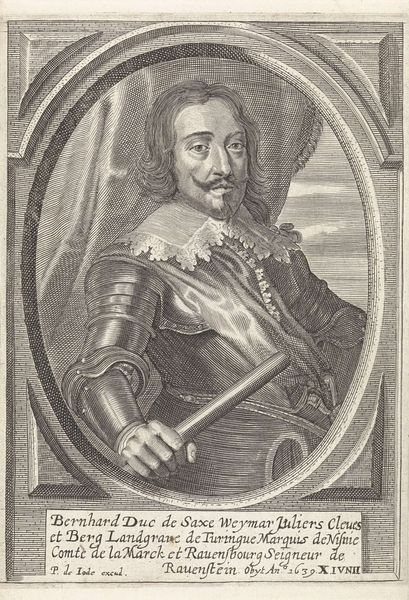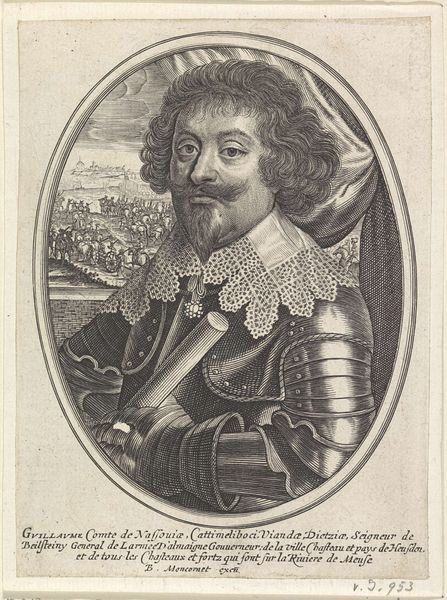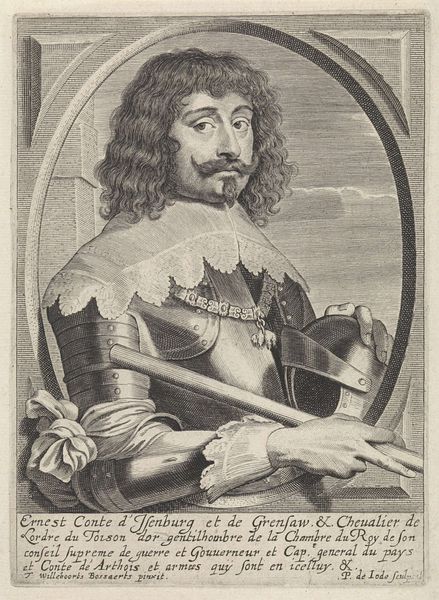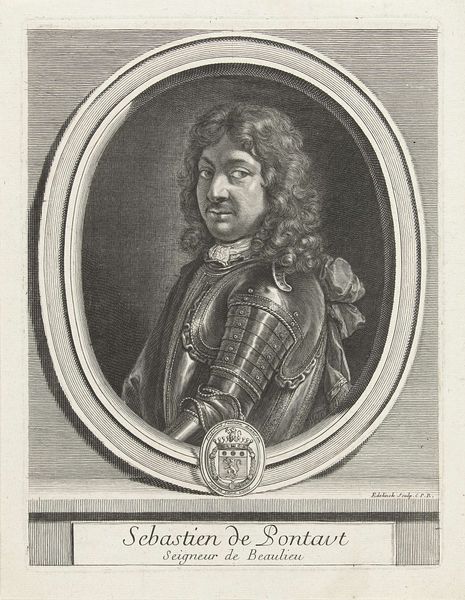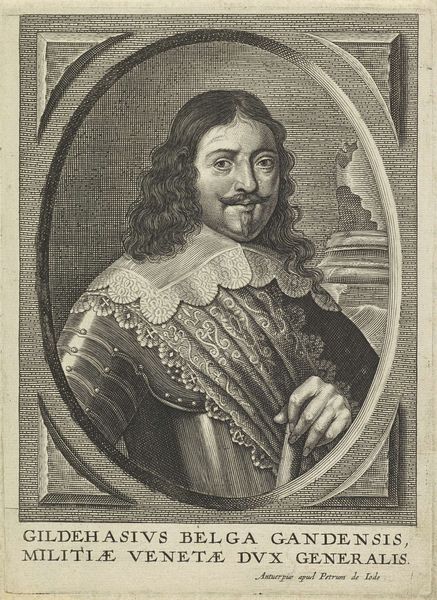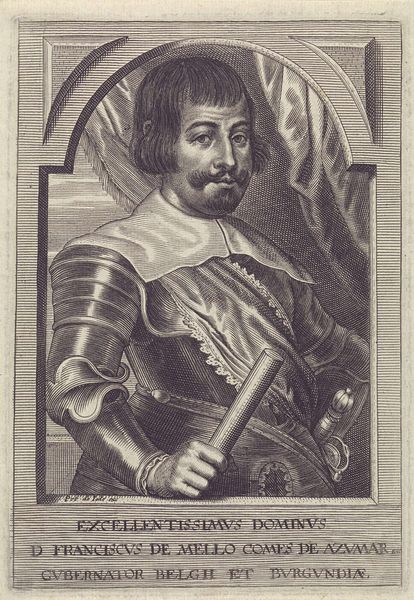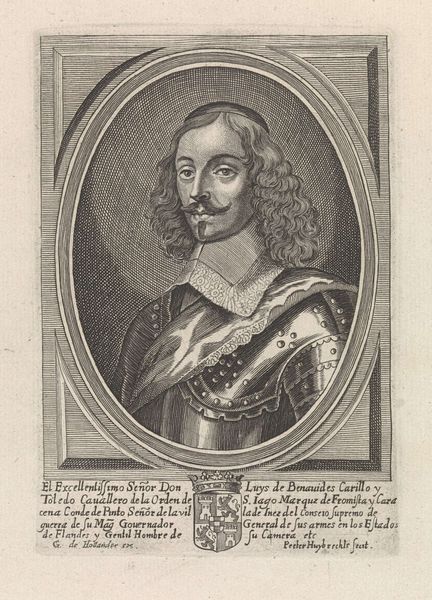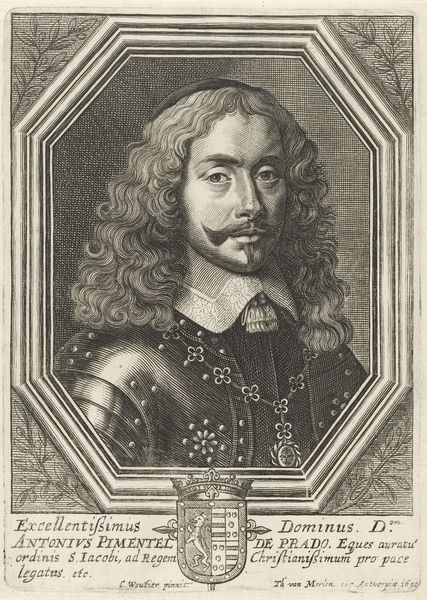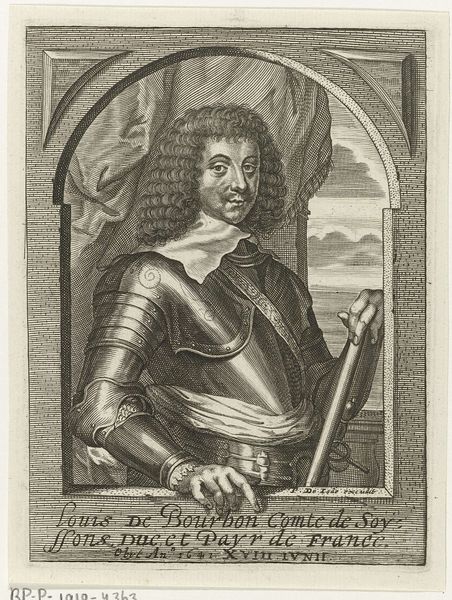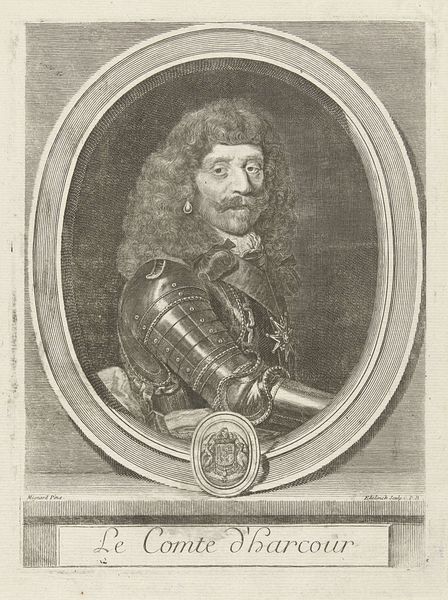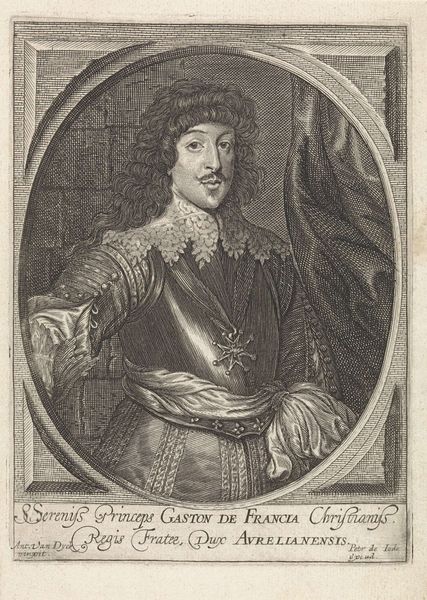
print, engraving
#
portrait
#
baroque
# print
#
old engraving style
#
caricature
#
form
#
portrait reference
#
line
#
portrait drawing
#
history-painting
#
engraving
#
realism
Dimensions: height 160 mm, width 115 mm
Copyright: Rijks Museum: Open Domain
Editor: So, this is "Portret van Willem, graaf van Nassau-Siegen," an engraving by Pieter de Jode II, made sometime between 1628 and 1670. The subject's stern gaze and the armor give it a real sense of power, but also feels quite rigid. How do you interpret this work? Curator: It's interesting to consider this portrait within the context of 17th-century power structures. The armour, the sword, and the formal pose – all these visual elements reinforce Willem's status as a count and military leader. But how might this image have functioned in relation to ideas of masculinity, authority, and perhaps even the ongoing political and religious conflicts of the time? Editor: So it’s not just a depiction of a powerful man, but a statement about power itself? Curator: Exactly! And consider the medium – engraving. Prints like this were reproducible. How does the dissemination of Willem’s image contribute to solidifying his power and influence? How does it speak to a rising sense of nationalism and the consolidation of power within aristocratic families like the Nassau-Siegen? Editor: That makes me think about the intended audience too. Who was meant to see this and what were they supposed to think? Curator: Precisely. This portrait might have been aimed at solidifying Willem’s authority among his constituents or as a form of propaganda. Thinking about the “why” behind this image shifts our understanding of its artistic merit. Editor: It really changes things to think about art as actively shaping opinions, and not just passively reflecting them. Curator: Right. And to examine the artwork as a powerful statement within broader sociopolitical circumstances. This piece provides interesting insight to gender, race and class of the time. Editor: I see this artwork with new eyes now! Thank you.
Comments
No comments
Be the first to comment and join the conversation on the ultimate creative platform.

